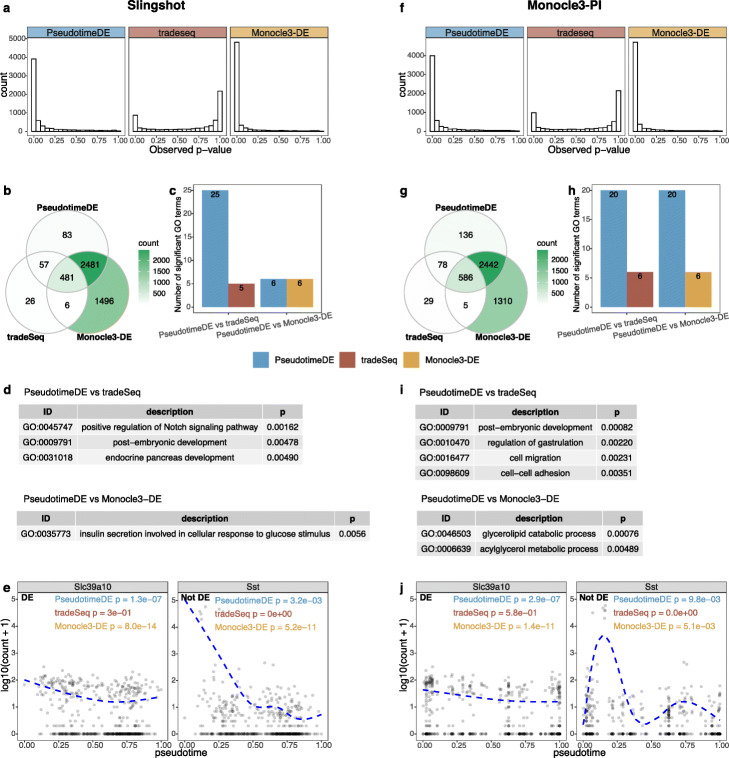Fig. 5.
Application of PseudotimeDE, tradeSeq, and Monocle3-DE to the pancreatic beta cell maturation dataset. Left panels a–e are based on pseudotime inferred by Slingshot; right panels f–j are based on pseudotime inferred by Monocle3-PI. a, f Histograms of all genes’ p-values by the three DE methods. The bimodal distributions of tradeSeq’s p-values suggest a violation of the requirement that p-values follow the Uniform [0,1] distribution under the null hypothesis. b, g Venn plots showing the overlaps of the significant DE genes (BH adjusted- p≤0.01) identified by the three DE methods. PseudotimeDE’s DE genes almost include tradeSeq’s. c, h Numbers of GO terms enriched (p<0.01) in the significant DE genes specifically found by PseudotimeDE or tradeSeq/Monocle3-DE in pairwise comparisons between PseudotimeDE and tradeSeq/Monocle3-DE in b and g. Many more GO terms are enriched in the PseudotimeDE-specific DE genes than in the tradeSeq- or Monocle3-DE-specific ones. d, i Example GO terms enriched in the Pseudotime-specific DE genes in c and h. Many of these terms are related to related to insulin, beta cell regulation, and pancreas development. e, j Two examples genes: Slc39a10 (DE) and Sst (non-DE). For Slc39a10, both PseudotimeDE and Monocle3-DE yield small p-values (p<1e−6), while tradeSeq does not (p>0.1). For Sst, PseudotimeDE yields larger p-values than tradeSeq and Monocle3-DE do. Dashed blue lines are the fitted curves by NB-GAM

